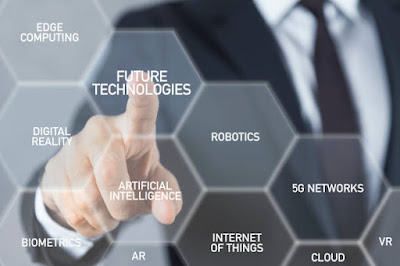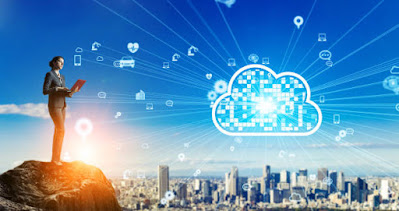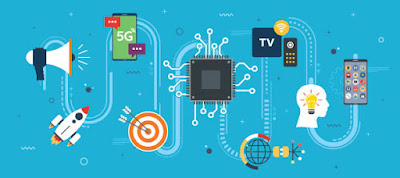WHAT IS EDGE COMPUTING
for IT devices of the edge to be as smart as we need, they have to be able to accurately process a lot of data that have been collected, share these already processed data in time when requested and also take further actions promptly when requested to. Conventionally, these data are stored in a centralized data house (cloud), and as such, obtaining, processing, and redistributing these data takes a lot of work and needs to be done in milliseconds. Edge computing is the science of processing data locally. In this new technology, data does not have to be transported from one server to another.
Unlike in cloud computing where data has to be stored, processed, and managed in the cloud ( centralized data house), edge computing entails the capturing, managing, storing, analyzing, processing, and retrieving of data near the end user not in a centralized data house. So as the name implies, data are stored at the "edge" ( close to the end-user)
As 5G technology continues to grow rapidly, Internet of things ( IoT) devices will continue to link more and more devices of the edge and these devices are in constant and continuous search of information. Instead of a continuing to and fro movement from the cloud (centralized data house) to the client ( end-user) data needed could be stored near the client to ensure speed ( rapid response), accuracy, technicality, etc.
THE PROCESS OF EDGE COMPUTING
the conventional method of storing and analyzing data is through a centralized data house commonly referred to as the cloud. But come to think of it, every Information found in the cloud today was not originally manufactured, produced, or collected in the cloud. every data in the cloud was collected in our environment. When actions are carried out in this world, data are produced and every specific set of data is collected and arranged through smart IoT devices and sent to the cloud for further filtering and storage. While IoT devices send data that is not properly filtered to the cloud, edge devices enable local processing or filtering of the data. In as much as these locally processed data could be sent to the cloud, the volume of data that would be sent to the cloud is much smaller and well filtered which enables accuracy and efficiency.
Read more on how edge computing can be used to improve sustainability
EDGE COMPUTING IS AN EXTENSION OF WHICH TECHNOLOGY?
Edge computing is simply an advanced extension of cloud computing that improves user experience and reduces latency for end users.
Whereas cloud computing has to do with data storage in a data house, edge computing stores data at the edge ( very close to the end-user) thereby reducing latency and increasing the speed of response. Edge computing is similar to cloud computing in several ways.
BENEFITS OR ADVANTAGES OF EDGE COMPUTING
edge computing has emerged as a cheaper and easier alternative to cloud computing due to a lot of factors.
factors that have made edge computing cheaper and easier
Some benefits or advantages of edge computing include
1.) SPEEDY RESPONSE
There is not just enough time in our world today. even a fraction of seconds can determine life or death in the health sector. In the banking sector, a minute delay could cost billions of dollars. Speed is needed in a lot of sectors in our world today and the sector of data collection and distribution is not an exemption. Every client wants to get access to a specific set of data in time to make informed decisions. The fact is that time is just too precious in our world today. Edge computing reduces the time-of-response by eliminating time for data to make a to and fro trip to the cloud and back thereby reducing time. Furthermore, Machines can take advantage of edge computing to mimic the perception speed of human beings, which is not just very helpful but also useful for applications such as augmented reality (AR) and autonomous vehicles, etc.
2.) PRIVACY
One very important factor in our world today is privacy. everybody wants to keep important information about important things private and edge computing encourages privacy in several ways. firstly, edge computing encourages the keeping of sensitive data locally without sending it to the cloud. this practice reduces the risk of exposure because the protocol of movement of data will be reduced and interaction with public cloud networks will be minimized.
The centralized cloud is very vulnerable because all information is kept in a pla6and one bridge could expose a lot of information. In as much as there are concerns that edge computing devices may be weak to withstand malware attacks, the architectural structure of edge computing devices makes it possible for them to isolate infected areas ( when attacked by malware) and keep the system running.
3.) COST REDUCTION
Edge computing is also quite cheap because the process is near the end user. data is sourced from a near node thereby reducing the cost of moving data from one point to another point. one very important advantage of edge computing is that it can operate without access to the internet. This is because edge computers often rely on local access network (LAN) connectivity to transfer and process data and only use the internet for transferring data to the cloud for storage and analysis. This reduces the cost of edge computing
4.) RELIABILITY
edge computing distributes, processes, and stores data over a wide range of devices and data centers which are known as nodes. The failure of a single node cannot hinder smooth running in edge computing because its architecture enables it to work partially. edge computing alert system makes it possible for IT personnel to respond rapidly to these types of issues.
5.) IMPROVED USER EXPERIENCE
The combination of all the above-listed benefits ensures that the user's experience is excellent.
DISADVANTAGES OF EDGE COMPUTING
1.) Protecting data is also easier in the case of cloud platforms due to the widespread adoption of end-to-end encryption protocols
2.) Due to the centralized implementation of cutting-edge cyber security measures by vendors and organizations, cloud computing platforms can withstand malware attacks and are inherently more secured compared to edge computing platforms.
3.) due to cloud computing centralized nature, retrieving data, business continuity, and disaster recovery is easier and less expensive in the case of cloud computing when compared with edge computing











0 Comments